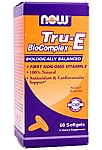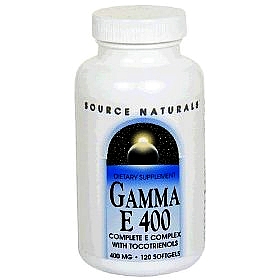Mailbag: Best Vitamin E?
Dear AllStarHealth,
I’ve always taken vitamin E because there’s a family history of heart disease and a few of my nutrition books say it’s beneficial. But in the last few years I’ve come across conflicting information about vitamin E including some recent news stories that say it doesn’t help and can actually be harmful to use vitamin E supplements. So what’s the story?
Thanks,
Mike W.
Novato, CA
Dear Mike,
Once upon a time, the type of vitamin E supplement in question wouldn’t have mattered because they were all the same. At this point in time, however, it really depends on what kind of vitamin E supplement we’re talking about.
Most of the public’s and even the researchers’ confusion about vitamin E arises from the simple fact that both tend to regard to vitamin E as a single substance, when in fact vitamin E is a family of compounds.
The vitamin E ‘family’ consists of two groups; tocopherols and tocotrienols. Each group occurs in four forms; alpha, beta, gamma and delta. Each form has both distinct and interdependent roles to play. That’s where it gets really confusing, even for researchers.
Beyond the fact that there are 8 forms, their roles have not been (and are still not) completely understood. Yet, for decades, most vitamin E supplements contained only one of these forms, d-alpha tocopherol. There is some basis for that being the ‘most important’ form, but what has become clear – and what has confounded research studies, vitamin makers, and the vitamin-using public – is how important the other forms are.
In fact, let’s have even more confusion; not only did most vitamin E supplements (and multis) traditionally contain only the alpha tocopherol form, there were (and are) two versions of it used in supplements. A more expensive, superior natural form (d-alpha tocopherol), almost twice as effective as the inferior, less expensive synthetic form (dl-alpha tocopherol). Some vitamin E studies used one form, some used the other form. Similarly, vitamin E supplements can also contain one form or the other.

The natural form of E is best.
When you obtain vitamin E from foods, you tend to get all of the vitamin E compounds together. But as we’ve said, most vitamin E supplements consist of only the one form, d-alpha tocopherol, probably based on the observation that the d-alpha form is the most abundant form found in tissues and blood plasma. D-alpha tocopherol is the best-studied form of vitamin E, and most pharmacological standards are based on this form.
But it is largely a failure to understand, include and account for the roles of all vitamin E compounds has tainted interpretations of clinical studies, leading to a lack of consensus on the value of vitamin E supplements altogether.
In terms of vitamin E supplements, the most recent research would seem to support – exclusively – the use of a “full-spectrum” vitamin E supplement, one that contains all 8 vitamin E compounds, but, ideally, one particularly rich in gamma tocopherol.
Gamma and alpha-tocopherol have an important relationship to each other. By taking only alpha-tocopherol, you set in motion a chain of events that displaces and depletes the more protective gamma tocopherol. But contrary to what you might expect, by taking gamma tocopherol, you actually increase both gamma and alpha tocopherol.
This is an ideal scenario with respect to heart health since only the right balance of vitamin E can inhibit the harmful oxidation of LDL cholesterol. LDL, or ‘bad’ cholesterol, consists of both a lipid (fat) portion and a protein portion. Alpha tocopherol protects only the lipid part, while the gamma portion protects both parts. Taking only the alpha form can increase overall LDL oxidation – the last thing you want – while taking alpha and gamma or gamma alone can decrease overall LDL oxidation.
Another point about vitamin E and cardiovascular health; unlike alpha tocopherol, gamma tocopherol is also able to prevent the harmful oxidation of a desirable protein (tetrahydrobiopterin) that increases synthesis of nitric oxide (NO). As the body’s natural vasodilator, NO opens and relaxes the walls of blood vessels, easing blood pressure and the force required to circulate blood, while increasing the flow of blood throughout the body. NO is an extremely important cardiovascular heart health factor and anything one can do to increase its synthesis is desirable, so taking a gamma-rich vitamin E supplement makes sense on this basis also.
When you look at the wide range of vitamin E supplements on the market, you can trace the evolution of the various products as they were reformulated to reflect more recent research.

Most vitamin E's aren't aligned with the latest research findings.
There are still plenty of d-alpha tocopherol-only supplements available. In fact, most vitamin E supplements are still like this.
But they are slowly losing market share to more the full-spectrum vitamin E supplements or gamma-rich products as well as awareness of these issues grows.
Based on our assessment of current research, our advice would be to either use a full-spectrum vitamin E supplement rich in the gamma tocopherol fraction, or not use one at all. If your multi uses the cheaper synthetic dl-alpha tocopherol form (as many supermarket and drugstore brands do) it doesn’t reflect well on that brand’s choice of ingredients, so consider upgrading to a better multi as well.
In AllStarHealth.com’s current vitamin E product line, these vitamin E’s would be best:







